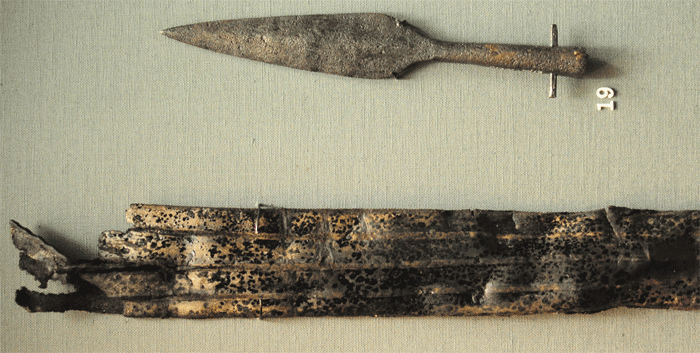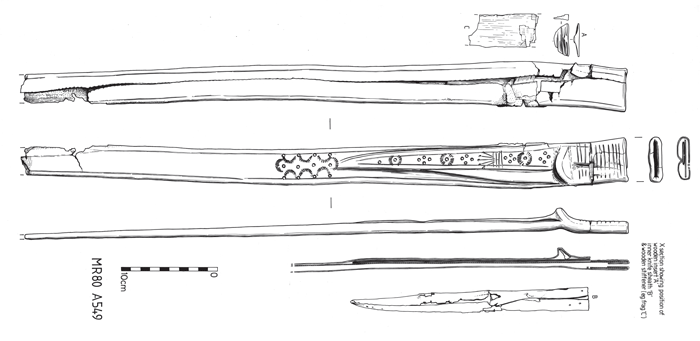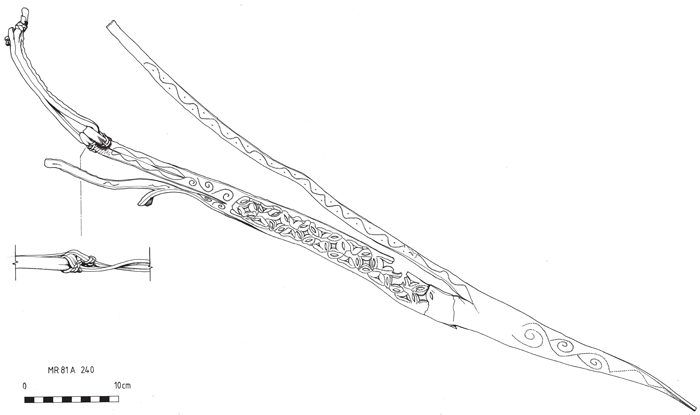| Jeremy V. Krause wrote: |
| I just see historically accurate designs tooled in leather as a valid avenue in historically based scabbard making (1000-1300) especially when done in a way emphasizing historic, not modern design sensibilities. |
Hello Jeremy,
It really comes down to how much detail someone is willing to extrapolate from the evidence. As it stands, we don't really have any surviving sword scabbards from the period 1000-1300 that do incorporate more than a few incised lines or possibly some very basic and small designs. I can't say I've looked at them all lately, but in general this holds true. Period artwork depicting scabbards really doesn't help the matter at all, as manuscript marginalia and illustrations and stone sculpture (which has to be tooled in order to achieve anything) almost never contain enough explicit details to be sure of what they're representing.
On the other hand, some of the artwork does clearly show designs on scabbards. We can assume that paint and/or tooling was used to create these designs in reality. With what evidence I have before me, paint is by far the safer route. I have two reasons for this. The first is obviously the presence of painted sword scabbards, such as the example I discussed on the first page. The second is the fact that parchment was a popular material for covering scabbards and thicker pieces of leather were apparently not. Parchment is more akin in its qualities to paper than heavy leather, and will not take tooling in the same way we expect to see it on knife scabbards, which are made from a different material.
Please keep in mind that I'm considering mainly 13th century examples to make my points. I can't speak for earlier stuff, as that's a topic I have not dealt with. I'm also presenting information based on a rather poor body of specific evidence, so I'm certainly not infallible. I do, however, enjoy erring on the side of caution and taking what evidence we have at face value. The knife sheaths and hints of tooling on scabbards, such as the light lines incised on King Sancho IV's, are compelling, yet I admit it does not add up to enough for me to justify saying 'yes, scabbards during the High Middle Ages could be heavily tooled."
Cheers!
-Gregory






